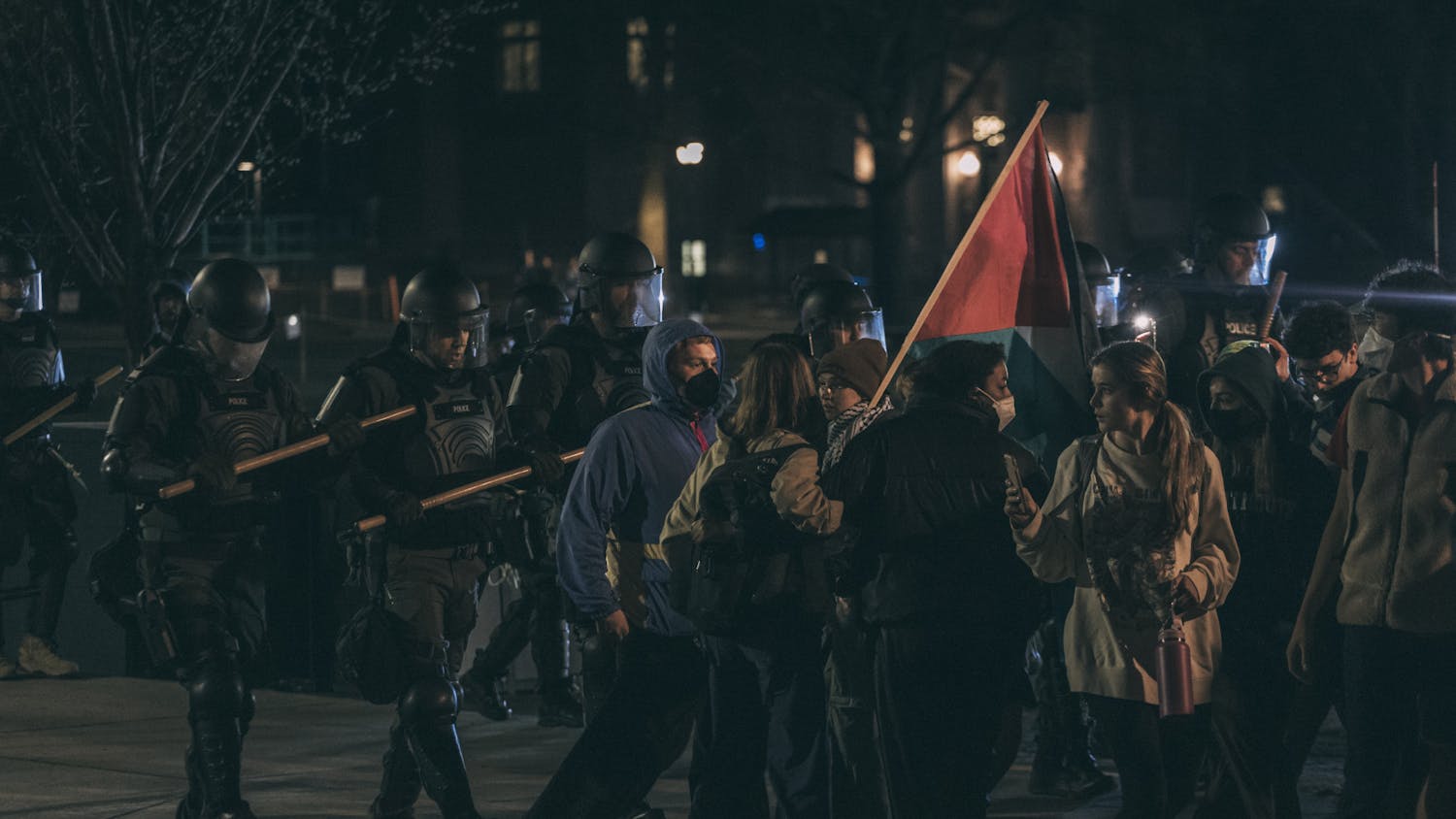A black bear has been spotted around campus on several occasions in the past few days, providing amusement and excitement to students, but causing nightmares for Safety and Security and the administration.
The bear is not a full-grown adult, and is estimated to stand approximately four feet tall and to weigh between 70 to 100 pounds.
Still, the animal can be extremely dangerous, according to College Proctor Harry Kinne, the newly appointed director of Safety and Security.
There have been two confirmed occasions when the bear was spotted, and numerous other reports, Kinne said. The bear was last seen on Thursday afternoon, in the vicinity of Baker Library.
The bear was sighted a little after 1 p.m. on North Main Street, and a crowd of curious onlookers soon gathered around it. S&S and Hanover Police arrived on the scene soon afterwards.
"I was walking out from Silsby to go to the library around 1:45 when I noticed a ton of people, and cops started yelling at me to move to the side," said Susan Dain-Owens '05. "I then noticed a bear climbing up a tree about 20 feet away. It was really random."
"We are most concerned about the students," Kinne added. "When curious people approach it, they put themselves in harm's way."
"It was really small and cuddly," said Elisa Yi '06, who was one of the people who spotted the bear outside Novack Cafe.
However harmless it may look, it can still potentially be very dangerous, Kinne said, adding that anyone who sees a bear should contact S&S immediately and keep away from it.
He noted that while S&S was trying to protect both humans and the bear, it would have to "destroy" the bear if a human life was in danger.
In this case, since people were trying to get a good look at the bear, they formed a circle around it, which made it feel threatened. There were more than 50 students looking on at one point, and all of them could have been potential targets if the bear were to strike out.
"The bear began to take an offensive position and even rose up on its hind legs," Kinne said. It finally escaped down Webster Avenue.
There have also been reports of students trying to feed the bear, but Kinne said that this should be avoided at all costs.
Since then, there have also been reports of a larger bear having been sighted near the River apartments, raising additional concerns.
The administration is working with the New Hampshire Fish and Game Department to analyze the causes and prevent further appearances of bears. One theory is that the bear was abandoned by its mother, and received a hostile reception from other male adult bears, and that it is trying to establish its own territory.
On campus, there have been infrequent sightings of other wild animals such as moose and deer, but bear sightings are extremely rare.
The population of black bears in New Hampshire has been on the rise for the past few decades: in 1994 it was a mere 3,000, but it has now reached a figure thought to be between 4,500 and 5,000.
The black bear is the only kind of bear found in New Hampshire.
The increasing numbers of bears in the state has also led to a rise in assistance requested from the Fish and Game Department. In 2000, there were 557 cases of complaints for property, 137 for human health and safety and 52 for agriculture.
Ben Kilham, author of "Among the Bears," has noted in the past that 20 percent of the black bears "harvested" during hunts in New Hampshire were nuisance bears. Overall, Eastern black bears are doubling their population every seven years.
However, while bear appearances often lead to mass hysteria, they are less dangerous than normally thought. The last reported death caused by a bear in New Hampshire was in 1784. While people have been injured since, Kinne said that he did not know of any injuries inflicted on Dartmouth students.



